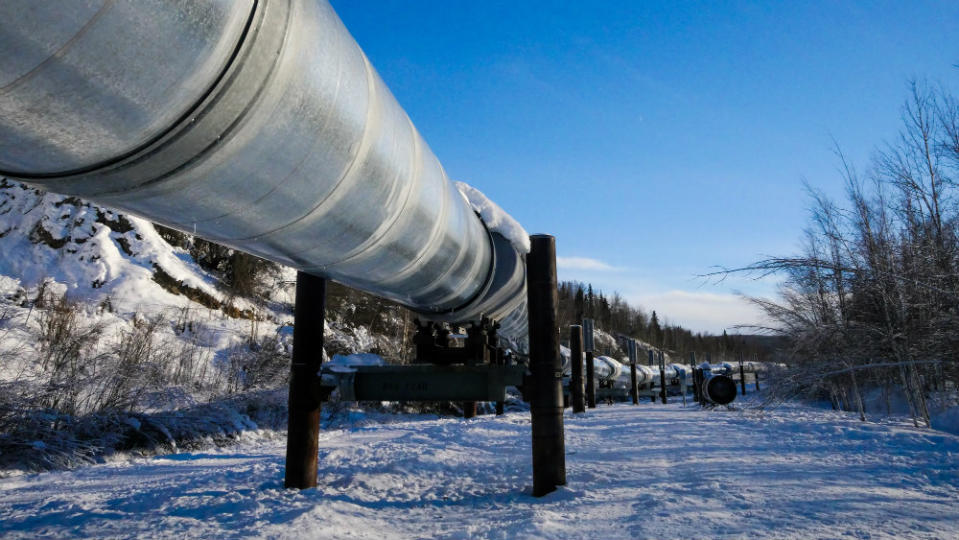Why Canadian Natural Resources Fell 10% in September

Written by Rajiv Nanjapla at The Motley Fool Canada
The global equity markets were under pressure last month, with the S&P/TSX Composite Index falling 4.6%. After the Federal Reserve of the United States made its third interest rate hike of 75 basis points in a row, fears of recession led to a fall in equity markets.
Meanwhile, oil prices declined substantially amid the weakening global demand and recession fears. China’s zero-COVID policy led to a full or partial lockdown of 70 cities, thus weakening oil demand. West Texas Intermediate (WTI) crude fell by 11.2% last month. The decline in oil prices has caused a sell-off in oil-producing companies, including Canadian Natural Resources (TSX:CNQ)(NYSE:CNQ). The stock price of the oil and natural gas producer fell by 10.7% last month. So, should you buy the stock after such a steep decline? Before moving to that question, let’s first look at the oil market outlook.
Oil market outlook
Despite the pandemic lockdowns in China and deteriorating economic outlook, the IEA (International Energy Agency) projects oil demand to rise by 2 million barrels per day in 2022 and 2.1 million barrels per day in 2023. Europe and the Middle East are increasing usage of oil for power production amid record natural gas prices. This demand is outweighing the decline in China’s energy usage during the lockdown.
Besides OPEC+ (Organization of the Petroleum Exporting Countries), which is meeting on October 5th, could announce a substantial cut in oil production. Many analysts believe OPEC+ is comfortable with Brent crude trading around US$90/barrel. So, analysts are projecting crude production cuts at around US$85/barrel as of September 30th. Besides, many analysts are bullish on oil and have given price targets of over US$100/barrel for 2023. So, the outlook for the oil market looks healthy. Now, let’s look at Canadian Natural Resources’ financials and growth initiatives.
Canadian Natural Resources’ performance
Amid higher commodity prices and increased production, Canadian Natural Resources has delivered solid performance in the first six months of this year, with its adjusted net earnings from operations growing by 166%. CNR generated adjusted fund flows of $10.4 billion during the period, thus delivering free cash flows of $6.7 billion. The company’s average natural gas production increased by 30% to 2,105 million cubic feet per day during solid drilling activities and acquisitions.
However, its liquid production declined by 9% due to the planned turnaround activities. With turnaround activities complete, both its mines are now operating at full capacity. The company, which had drilled 22 wells in the first six months, now expects to maintain its momentum in the second half. So, it raised its 2022 capital investment guidance by $200 million to $4.9 billion. Supported by these strategic investments, CNR’s management hopes to increase its 2023 production by 40,000 barrels of oil equivalent per day. So, the company’s growth prospects look solid.
Dividends and valuation
Canadian Natural Resources has an excellent track record of rewarding its shareholders through share repurchases and dividend hikes. Since 2010, it has repurchased 189.6 million shares for $9.3 billion. Besides, it has raised its dividends uninterruptedly for the last 22 years while its dividend yield stands at a healthy 4.67%.
Meanwhile, the company is currently trading at a discount of around 25% compared to its 52-week highs. Amid the steep pullback, CNR’s NTM (next 12 months) price-to-earnings has declined to 5.4, lower than its historical average.
So, considering its healthy growth prospects, stellar dividend growth track record, and attractive valuation, I believe the recent correction in CNR’s stock has provided an ideal entry point for long-term investors.
The post Why Canadian Natural Resources Fell 10% in September appeared first on The Motley Fool Canada.
Should You Invest $1,000 In Canadian Natural Resources?
Before you consider Canadian Natural Resources, you'll want to hear this.
Our market-beating analyst team just revealed what they believe are the 5 best stocks for investors to buy in September 2022 ... and Canadian Natural Resources wasn't on the list.
The online investing service they've run for nearly a decade, Motley Fool Stock Advisor Canada, is beating the TSX by 21 percentage points. And right now, they think there are 5 stocks that are better buys.
See the 5 Stocks * Returns as of 9/14/22
More reading
Fool contributor Rajiv Nanjapla has no position in any of the stocks mentioned. The Motley Fool recommends CDN NATURAL RES. The Motley Fool has a disclosure policy.
2022

 Yahoo Finance
Yahoo Finance 